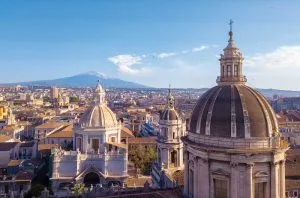The very simple answer is that the Left Bank and Right Bank are two Bordeaux winemaking regions separated by an estuary and two rivers.
Situated on the west coast of France, Bordeaux is split in two by the Gironde Estuary, which divides into the Dordogne and Garonne rivers. When looking at a map of the region, the area to the north and right of the Gironde is the Right Bank and the areas below and to the left constitute the Left Bank.
More specifically, the Right Bank is the area to the north of the Dordogne river and the Left Bank is the area directly south of the Garonne River, both of which feed into the Gironde estuary that meets the Atlantic Ocean.
The joining of these three forms a shape like an upside down ‘Y’ with the two banks on either side and the area in between known as the ‘Entre-deux-Mers’.
Left vs Right Bank Bordeaux: Appellations
The Left Bank encompasses the Médoc wine region north of Bordeaux. Its four best-known appellations – from north to south – are St-Estèphe, Pauillac, St-Julien and Margaux.
It also encompasses the Haut-Médoc, Listrac-Médoc and Moulis-en-Médoc appellations. South of Bordeaux, the Left Bank includes Pessac-Léognan and Graves, plus the (largely) sweet wine producing appellations of Sauternes and Barsac.
The Right Bank’s most famous appellations are Pomerol and St-Émilion, the latter of which has four ‘satellite’ appellations. These are Montagne-, Lussac-, Puisseguin- and St-Georges St-Émilion.
However, the Right Bank also encompasses the: Côtes






